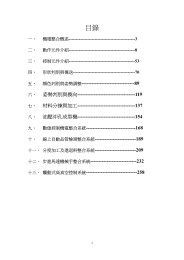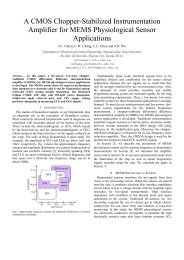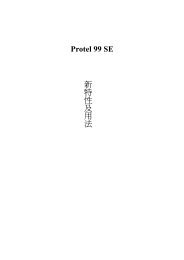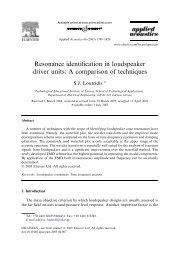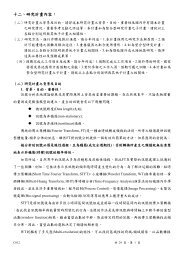IRIS RECOGNITION BASED ON HILBERT–HUANG TRANSFORM 1 ...
IRIS RECOGNITION BASED ON HILBERT–HUANG TRANSFORM 1 ...
IRIS RECOGNITION BASED ON HILBERT–HUANG TRANSFORM 1 ...
You also want an ePaper? Increase the reach of your titles
YUMPU automatically turns print PDFs into web optimized ePapers that Google loves.
636 Z.Yang,Z.Yang&L.Yang<br />
x<br />
c1<br />
c2<br />
c3<br />
c4<br />
c5<br />
c6<br />
r<br />
250<br />
200<br />
150<br />
(a) (b)<br />
0<br />
20<br />
0<br />
50 100 150 200 250 300 350 400 450 500<br />
−20<br />
0<br />
20<br />
0<br />
50 100 150 200 250 300 350 400 450 500<br />
−20<br />
0<br />
20<br />
0<br />
50 100 150 200 250 300 350 400 450 500<br />
−20<br />
0<br />
20<br />
0<br />
50 100 150 200 250 300 350 400 450 500<br />
−20<br />
0<br />
10<br />
0<br />
50 100 150 200 250 300 350 400 450 500<br />
−10<br />
0<br />
10<br />
0<br />
50 100 150 200 250 300 350 400 450 500<br />
−10<br />
0<br />
200<br />
180<br />
50 100 150 200 250 300 350 400 450 500<br />
160<br />
0 50 100 150 200 250 300 350 400 450 500<br />
x<br />
c1<br />
c2<br />
c3<br />
c4<br />
c5<br />
c6<br />
r<br />
200<br />
150<br />
100<br />
50<br />
0<br />
20<br />
0<br />
50 100 150 200 250 300 350 400 450 500<br />
−20<br />
0<br />
20<br />
0<br />
50 100 150 200 250 300 350 400 450 500<br />
−20<br />
0<br />
20<br />
0<br />
50 100 150 200 250 300 350 400 450 500<br />
−20<br />
0<br />
20<br />
0<br />
50 100 150 200 250 300 350 400 450 500<br />
−20<br />
0<br />
10<br />
0<br />
50 100 150 200 250 300 350 400 450 500<br />
−10<br />
0<br />
10<br />
0<br />
50 100 150 200 250 300 350 400 450 500<br />
−10<br />
0<br />
150<br />
50 100 150 200 250 300 350 400 450 500<br />
100<br />
0 50 100 150 200 250 300 350 400 450 500<br />
(c) (d)<br />
(e) (f)<br />
Fig. 11. (a) Iris image with bright illumination; (b) the same iris image with dark illumination;<br />
(c) the EMD decomposition result of the 10th line of (a); (d) the EMD decomposition result of<br />
the 10th line of (b); (e) the result by removing all the residues of lines from (a); (f) the result by<br />
removing all the residues of lines from (b).<br />
To show the robustness of our method to noise, we added 20 dB Gauss white<br />
noise to the iris image as shown in Fig. 12(a) and calculate the main frequency<br />
centers and the energies of 18 orientations in I1 of the original normalized image<br />
and the noise normalized image, as shown in Figs. 12(b) and 12(c), respectively.<br />
It can be seen that most features of the noisy iris image just have small changes<br />
compared with those of the original iris. Therefore, the proposed feature is robust<br />
to high frequency noise.<br />
3.4. Iris matching<br />
After feature extraction, an iris image is represented as a feature vector of length<br />
108. To improve computational efficiency and classification accuracy, Linear Discriminant<br />
Analysis (LDA) is first used to reduce the dimensionality of the feature<br />
vector and then the Euclidean similarity measure is adopted for classification. LDA<br />
is a linear statistic classification method, which intends to find a linear transform T<br />
as such that, after its application, the scatter of sample vectors is minimized within<br />
each class, and the scatter of those mean vectors around the total mean vector can<br />
be maximized simultaneously. Further details of LDA may be found in Ref. 8.



